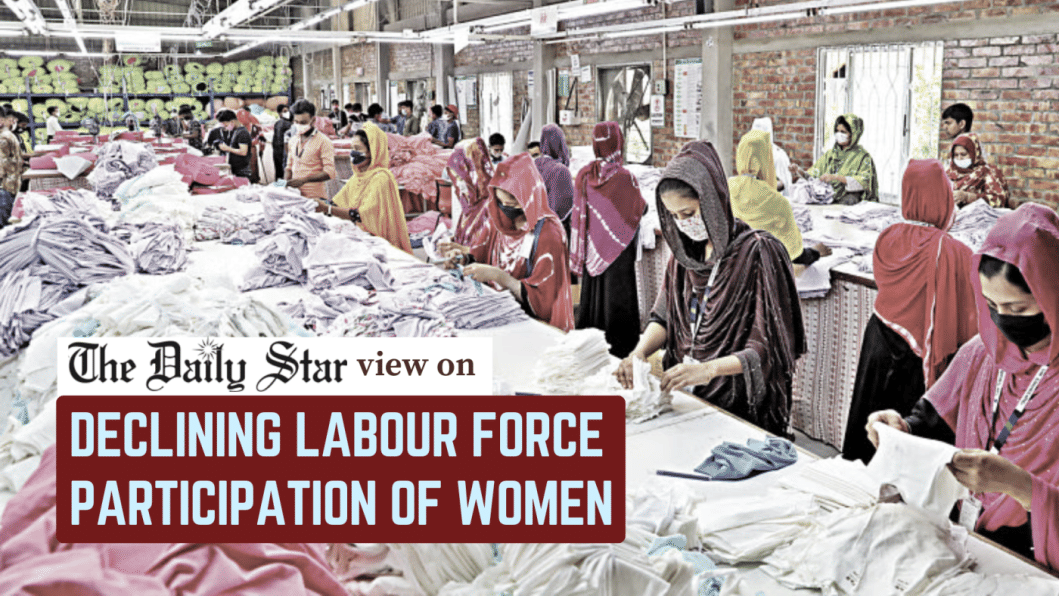Why are women falling behind?

We are deeply concerned by the declining participation of women in the labour force, as found in the Bangladesh Bureau of Statistics' (BBS) Labour Force Survey 2024. The survey reveals that our labour force shrank by 17 lakh in just one year, with women accounting for most of it. In 2024, the total labour force stood at 7.17 crore, down from 7.34 crore in 2023. This is particularly alarming because between 2010 and 2023, the labour force had grown by over 1.6 crore, driven largely by increased female participation, which rose from 1.72 crore in 2010 to 2.53 crore in 2023. However, this upward trend has now reversed. While male participation remained relatively stable at 4.8 crore in 2024, compared to 4.81 crore the previous year, female participation dropped significantly from 2.53 crore to 2.37 crore, which deserves scrutiny by our policymakers.
According to experts, although the economy is gradually shifting away from agriculture, this transformation hasn't led to better employment opportunities for women. Women's participation in urban, semi-skilled, and formal jobs has also not seen much improvement over the years. Economists have opined that one major reason behind this decline is the slow pace of job creation or "jobless growth." According to them, despite periods of high GDP growth, Bangladesh has failed to generate enough decent jobs to lift people out of poverty. Needless to say, scarcity of job opportunities has affected women disproportionately.
Reportedly, shrinking employment opportunities in manufacturing may be behind the decline in urban labour force participation among less-educated women. In industries like garments, automation and advanced technologies have already reduced the number of jobs available to women. Therefore, to stay competitive, women now need more skills and training. Moreover, in rural areas, women are facing significant barriers to entrepreneurship, such as limited access to capital, markets, and information. Government support for them also remains inadequate. For women with higher levels of education, the picture is even more complex. Limited availability of jobs matching their aspirations, lack of supportive infrastructure like childcare, and deep-rooted societal norms all contribute to their limited participation in the workforce.
To reverse the trend, the government must urgently implement bold, coordinated reforms and introduce inclusive policies. For educated urban women, more opportunities must be created in modern service sectors such as education, healthcare, finance, and hospitality. Removing persistent gender inequalities in the job sector is also crucial to achieve progress. Without meaningful actions, women will continue to fall behind, the poverty rate will increase, and Bangladesh's future development will be at risk.


 For all latest news, follow The Daily Star's Google News channel.
For all latest news, follow The Daily Star's Google News channel. 






Comments